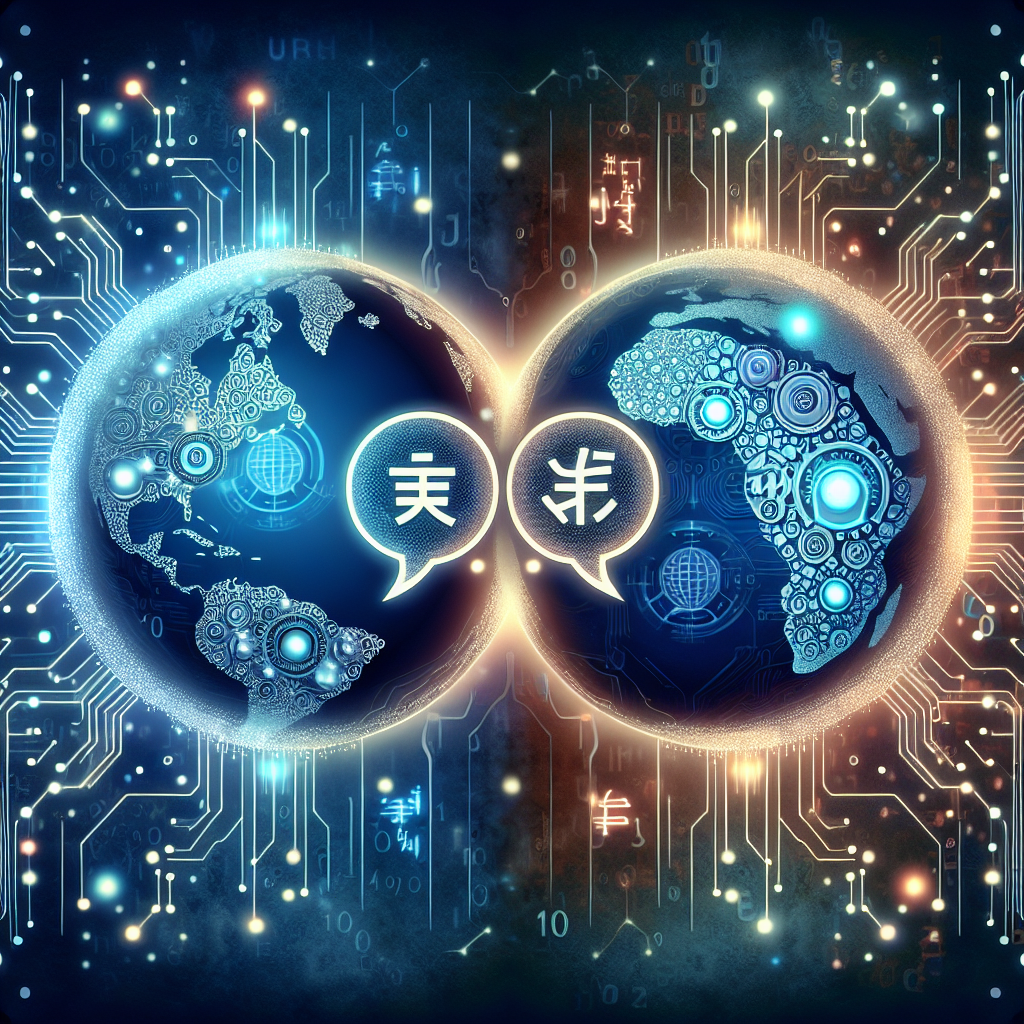In today’s globalized world, language barriers can often hinder effective communication between individuals, businesses, and governments. However, with the advancements in Artificial Intelligence (AI) technology, language translation has become more efficient and accurate than ever before. AI-powered translation tools are breaking down communication barriers and enabling seamless communication across different languages and cultures. In this article, we will explore the role of AI in language translation and how it is revolutionizing the way we communicate.
The Evolution of Language Translation
Language translation has been an integral part of human history for centuries, dating back to ancient civilizations where interpreters were used to facilitate communication between different cultures. Over time, manual translation methods have evolved with the invention of writing systems, dictionaries, and eventually, machine translation.
In the 1950s, researchers began experimenting with machine translation, using computers to automatically translate text from one language to another. However, early machine translation systems were limited in their capabilities and often produced inaccurate and awkward translations.
With the advent of AI technology in the 21st century, language translation has undergone a significant transformation. AI-powered translation tools leverage machine learning algorithms to learn and improve their translation capabilities over time. These tools can now accurately translate text, speech, and even images across multiple languages, making communication more accessible and efficient.
The Role of AI in Language Translation
AI plays a crucial role in language translation by enabling faster, more accurate, and more natural translations. Here are some key ways in which AI is revolutionizing the field of language translation:
1. Natural Language Processing (NLP): AI-powered translation tools use Natural Language Processing (NLP) algorithms to analyze and understand the context of the text being translated. This allows the tools to produce more accurate and contextually relevant translations, making communication more effective.
2. Neural Machine Translation (NMT): AI-powered translation tools use Neural Machine Translation (NMT) models to improve the accuracy and fluency of translations. NMT models are based on deep learning algorithms that can learn from large amounts of data to produce more natural and human-like translations.
3. Multimodal Translation: AI-powered translation tools can now translate not only text but also speech and images. This enables users to communicate in multiple modalities, making language translation more inclusive and accessible to a wider range of users.
4. Real-time Translation: AI-powered translation tools can provide real-time translation services, allowing users to communicate seamlessly across different languages in live conversations, meetings, and conferences. This feature is particularly useful for businesses and organizations operating in global markets.
5. Customization and Personalization: AI-powered translation tools can be customized and personalized to meet the specific needs of users. Users can tailor the translation settings, vocabulary, and tone to suit their preferences, making communication more efficient and personalized.
6. Continuous Learning and Improvement: AI-powered translation tools continuously learn and improve their translation capabilities over time. By analyzing user feedback and data, these tools can enhance their accuracy, fluency, and contextual understanding, providing more reliable and high-quality translations.
FAQs about AI in Language Translation
Q: Are AI-powered translation tools accurate?
A: AI-powered translation tools have significantly improved in accuracy and reliability in recent years. While they may not be perfect, they can provide accurate and contextually relevant translations for a wide range of languages and content types.
Q: Can AI-powered translation tools translate all languages?
A: AI-powered translation tools can translate a wide range of languages, including commonly spoken languages such as English, Spanish, Chinese, and French. However, the accuracy and availability of translations may vary depending on the language pair and the complexity of the content.
Q: How secure are AI-powered translation tools?
A: AI-powered translation tools prioritize data security and privacy, ensuring that user data is protected and encrypted during the translation process. Users can also choose secure and trusted translation tools to safeguard their sensitive information.
Q: How can businesses benefit from AI-powered translation tools?
A: Businesses can benefit from AI-powered translation tools by expanding their reach to global markets, improving communication with international clients and customers, and enhancing cross-cultural collaboration. These tools can also help businesses save time and resources by automating the translation process.
Q: What are the future trends in AI-powered language translation?
A: The future of AI-powered language translation is promising, with advancements in NLP, NMT, and multimodal translation technologies. Future trends may include more accurate and fluent translations, real-time translation services, and customized translation solutions tailored to specific industries and use cases.
In conclusion, AI-powered language translation is revolutionizing the way we communicate by breaking down communication barriers and enabling seamless communication across different languages and cultures. With the advancements in AI technology, language translation has become more efficient, accurate, and accessible than ever before. As AI continues to evolve, we can expect to see further improvements in translation quality, speed, and customization, making communication more inclusive and effective for all.

